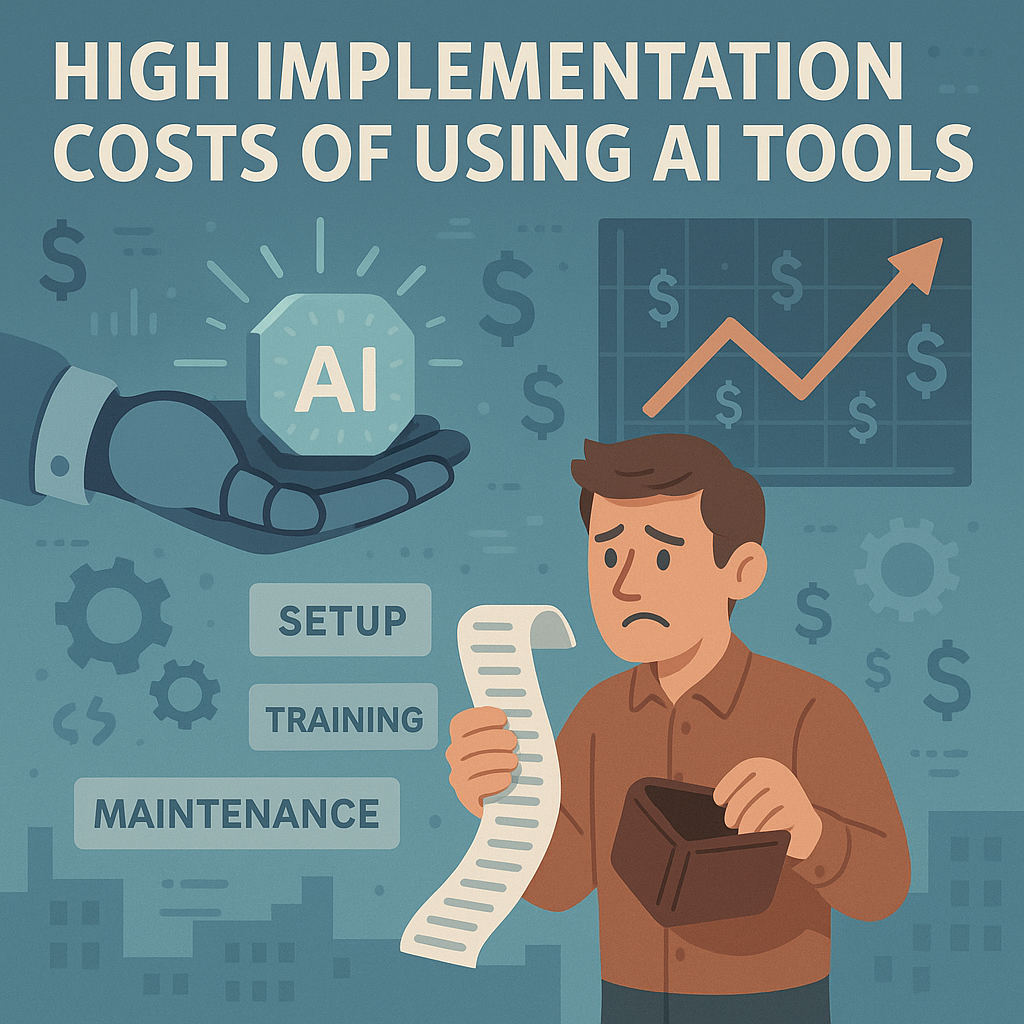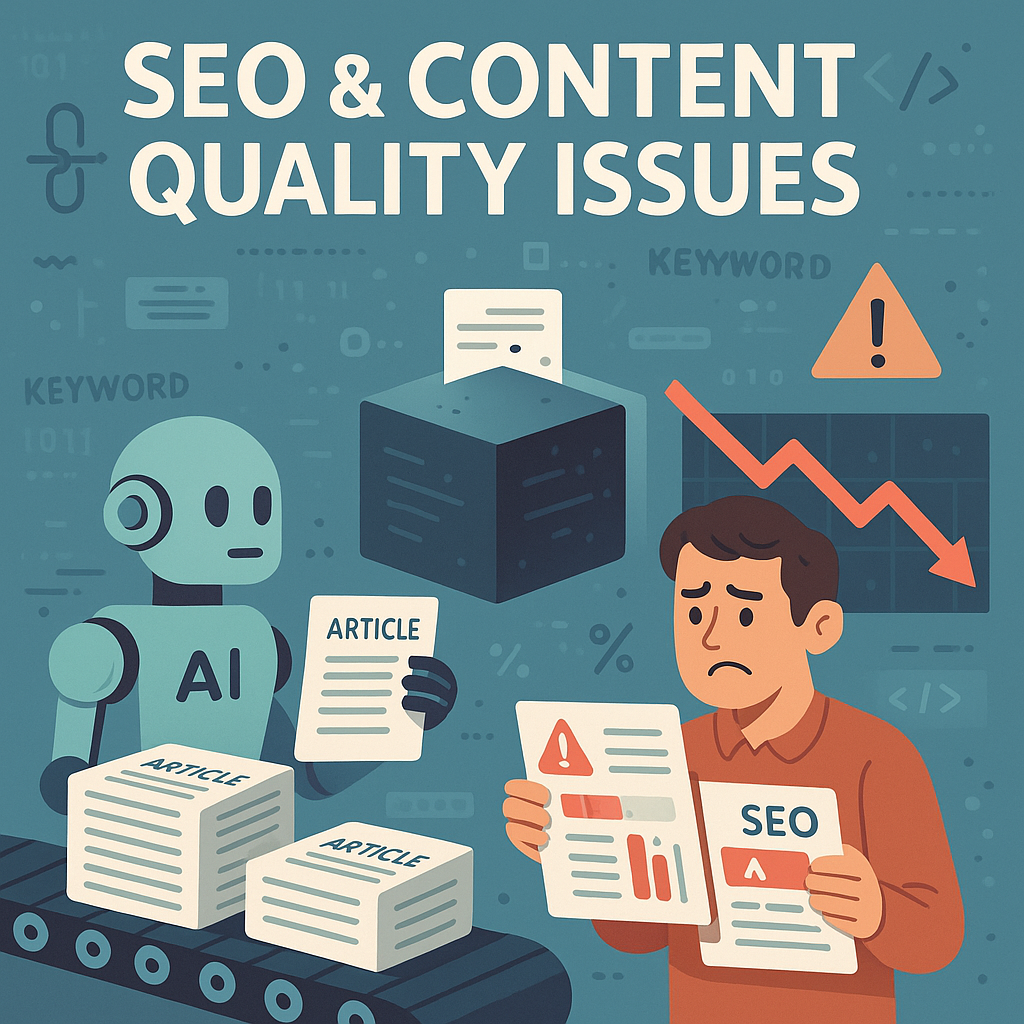
AI tools thrive on data — everything from what people click on to what they buy and how they behave online. But gathering and analyzing that much personal information comes with serious responsibilities. With strict regulations like GDPR in Europe and CCPA in California, brands must be extremely careful about how they handle user data.
A single slip-up, such as a data breach or unauthorized use of information, could not only destroy consumer trust but also lead to massive fines — sometimes reaching millions of euros or a percentage of your annual revenue. At the heart of it, AI’s effectiveness depends on both the quality and quantity of data, which means businesses need to strike a careful balance between innovation and privacy protection.

As AI becomes more advanced, it's also walking a fine line when it comes to ethics and legality. One major issue is the unauthorized use of personal data, which can easily land businesses in hot legal waters. For example, AI-generated calls, chatbots, and automated text messages have already sparked class-action lawsuits under laws like the Telephone Consumer Protection Act (TCPA) in the U.S.
There’s also growing concern around misleading or manipulated content produced by AI, often called “AI-washing.” Whether it’s fake reviews, auto-generated product claims, or AI-enhanced deepfakes, consumers are becoming more skeptical—and regulators are starting to take notice. These missteps can not only damage your brand’s reputation but also open the door to fines and litigation.
In short, using AI in digital marketing isn’t just about automation—it’s about acting responsibly and transparently to build long-term trust.

As brands race to embrace automation and artificial intelligence, a major challenge emerges — the decline of human connection in digital marketing. While AI tools can generate endless streams of content, they often lack emotional depth and authentic storytelling, making interactions feel cold or robotic.
Audiences today crave personalization, empathy, and relatability — qualities that algorithms struggle to replicate. Whether it’s an automated email campaign or a chatbot response, too much automation can alienate users who expect genuine engagement from brands.
Additionally, AI-generated copy may miss cultural nuances, emotional triggers, or the subtle tone adjustments that human writers naturally master. This not only impacts brand loyalty but can also reduce user trust, especially in sensitive niches like healthcare, education, or personal finance — all high-CPC sectors.
🧠 Pro Insight: To strike the right balance, businesses should use AI as a content assistant, not a replacement. Let real people handle tasks that require creativity, compassion, and critical thinking — particularly in storytelling, customer service, and conversion-focused copywriting.

While AI-powered marketing tools offer speed and automation, they can become a crutch if not used wisely. Many marketing teams are falling into the trap of blindly relying on algorithms, assuming AI always knows best. But when something goes wrong—like a bot misfiring an email campaign or misinterpreting user data—the lack of human oversight becomes painfully obvious.
What’s even more concerning is the growing AI skill gap. Without proper training, digital marketers may lack the knowledge to troubleshoot issues or make strategic adjustments when AI tools underperform. This creates a dangerous dependency, where businesses become vulnerable to system failures or misguided automation decisions.
To truly benefit from AI, brands must prioritize AI literacy, continuous upskilling, and critical thinking within their teams. Human expertise is still crucial to guide, interpret, and refine machine-generated results—especially in high-stakes industries like finance, healthcare, and e-commerce, where precision and trust matter most.
🔑 Takeaway: Treat AI as a collaborator, not a replacement. Combine the power of automation with human strategy to unlock the full potential of your digital marketing efforts.

One of the lesser-known yet highly critical challenges of using AI in digital marketing is algorithmic bias. AI systems are only as good as the data they’re trained on—and when that data is incomplete, unbalanced, or historically biased, the AI can unknowingly reinforce those patterns.
For instance, an AI-powered ad platform might disproportionately show certain products or services to one demographic while excluding others. This can result in unintentional discrimination, limited reach, and serious damage to brand reputation—especially in sectors like education, healthcare, or financial services, where fairness is essential.
Worse, biased AI algorithms may affect ad targeting, content recommendations, and even personalized messaging, all without human marketers being fully aware. Left unchecked, it can lead to compliance violations and alienate key market segments.
To counteract this, companies must implement bias audits, diverse training datasets, and inclusive marketing strategies. Regularly reviewing AI outputs for fairness and inclusivity is no longer optional—it's a brand necessity in the era of ethical digital marketing.
🔍 Pro Tip: Prioritize transparency and fairness in your AI tools. Use AI fairness tools, and involve human review to maintain accountability and protect brand equity.

In the digital era, trust is currency—and AI, when misused, can quickly drain it.
Consumers today are more privacy-aware than ever before. When brands use AI-driven personalization tools without clear consent, it can cross a fine line. Highly targeted ads based on browsing behavior or private data might seem impressive to marketers, but to users, they often feel creepy or invasive.
Even worse, over-automation in customer communication—via AI chatbots or generic email responses—can leave audiences feeling unheard or unvalued. When interactions lack authenticity, people begin to question whether a brand truly understands or respects their needs.
The misuse or overreach of customer data in marketing AI can spark fear and frustration, especially when consumers aren’t told how their data is used. A single misstep—like a poorly timed AI-generated message or a privacy breach—can lead to unsubscribes, bad reviews, or even legal issues under regulations like GDPR or CCPA.
Brands that want to build long-term loyalty must prioritize data transparency, consent-driven personalization, and authentic human engagement. Trust takes time to earn—and seconds to lose.
🔍 Pro Tip: Always provide clear opt-ins, explain how AI is used in your communication, and blend human oversight into your digital strategy.

In the world of AI-powered digital marketing, one truth stands firm: your AI is only as smart as the data it’s trained on.
When marketers feed their automation tools outdated, incomplete, or inaccurate data, the result is not just ineffective campaigns—it’s lost revenue, poor customer targeting, and misaligned marketing strategies. This dependence on real-time, high-quality data makes AI both a powerful asset and a potential liability.
Imagine launching an AI-driven email campaign using stale customer data—wrong names, outdated preferences, or inactive emails. The outcome? Low engagement, higher bounce rates, and a damaged sender reputation.
What’s worse, AI can’t self-correct without the human-led discipline of data hygiene. Regular audits, cleansing, and enrichment of databases are necessary to ensure marketing decisions remain sharp, relevant, and customer-centric.
Yet this ongoing data maintenance isn’t cheap. It demands time, skilled analysts, and sometimes specialized tools—making it a hidden cost in every AI marketing initiative.
💡 Takeaway: To fully unlock AI’s potential, invest in data quality management, not just the AI itself.

While AI promises smarter marketing and better ROI, the initial costs of implementing AI in digital marketing can be a serious hurdle—especially for small businesses or startups with limited budgets.
From purchasing advanced AI tools and setting up cloud-based infrastructure to integrating machine learning platforms into existing systems, the upfront investment isn’t small. Marketers often underestimate the need for technical expertise, training, and ongoing maintenance—each adding to the total cost.
For example, implementing a robust AI-powered analytics platform or chatbot system may require:
-
Licensing fees for premium tools
-
Cloud computing resources
-
Hiring or outsourcing to AI specialists
-
API integrations with CRM and email systems
📉 And here's the catch: The return on investment (ROI) rarely comes overnight. It takes months of data collection, algorithm training, and campaign testing before AI starts to show significant gains.
💡 Bottom Line: While the long-term benefits of AI in marketing can be substantial, brands must be financially and strategically prepared for the initial implementation costs and delayed ROI.

AI has made content creation faster—but not always better. Overusing AI tools to generate articles, blogs, or social media posts can lead to formulaic, repetitive, or shallow content that lacks originality and human insight.
Search engines like Google’s Helpful Content Update now prioritize human-written, well-researched, and authoritative content. In fact, Google can detect AI-generated fluff or keyword-stuffed paragraphs, which may result in lower search rankings or even penalties.
Moreover, audiences are quick to spot robotic tone and vague information. Poor engagement rates, high bounce rates, and reduced time-on-page all signal to Google that your content isn’t valuable—hurting your SEO score even more.
💡 Why it Matters: To maintain visibility and organic traffic, content should be:
-
Authentic and insightful
-
Backed by real data or expert opinion
-
Tailored for your target audience
-
SEO-optimized without keyword stuffing
💬 While AI can assist with drafts and ideas, it shouldn’t replace human creativity, strategy, and nuance. The best-performing content still comes from real people with real perspectives.

One of the biggest challenges with using AI in digital marketing is the lack of transparency. Most advanced AI models function as “black boxes”—they make decisions (like targeting ads or selecting keywords) without clearly showing how or why.
This can be frustrating for marketers who want to understand why a certain campaign succeeded or failed. Without insights into the AI’s decision-making process, it becomes incredibly difficult to:
-
Troubleshoot ad performance
-
Optimize targeting strategies
-
Improve user engagement
And here’s the kicker: this lack of visibility can lead to wasted ad spend, missed opportunities, and reduced ROI.
💡 The Solution: Brands must invest in tools that offer AI auditability and explainability. These platforms help decode how algorithms make choices—giving marketers back the control they need to make informed decisions.
🔍 Transparency in automation is no longer optional; it’s essential for maintaining brand credibility, complying with digital marketing regulations, and building consumer trust.






Be First to Comment